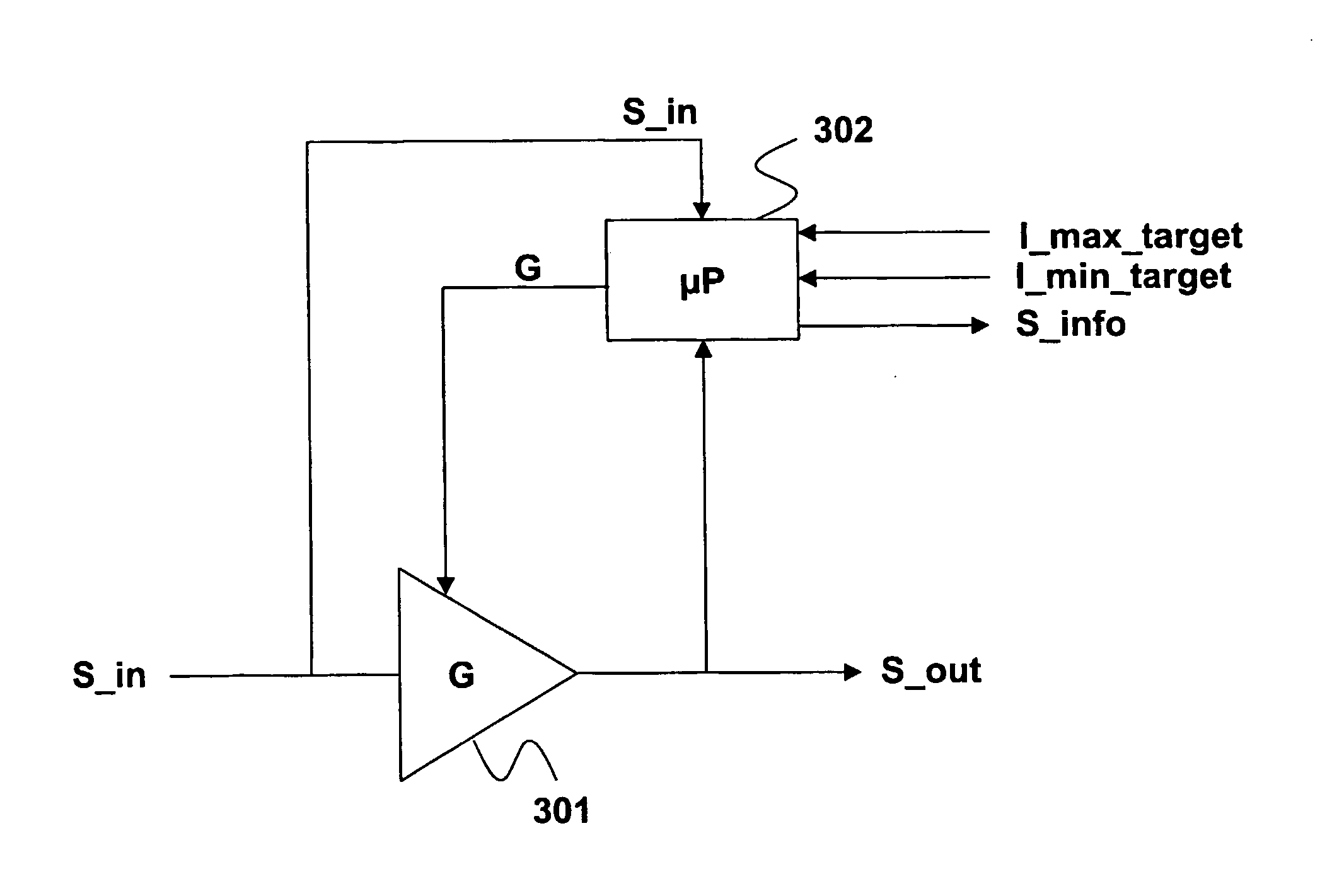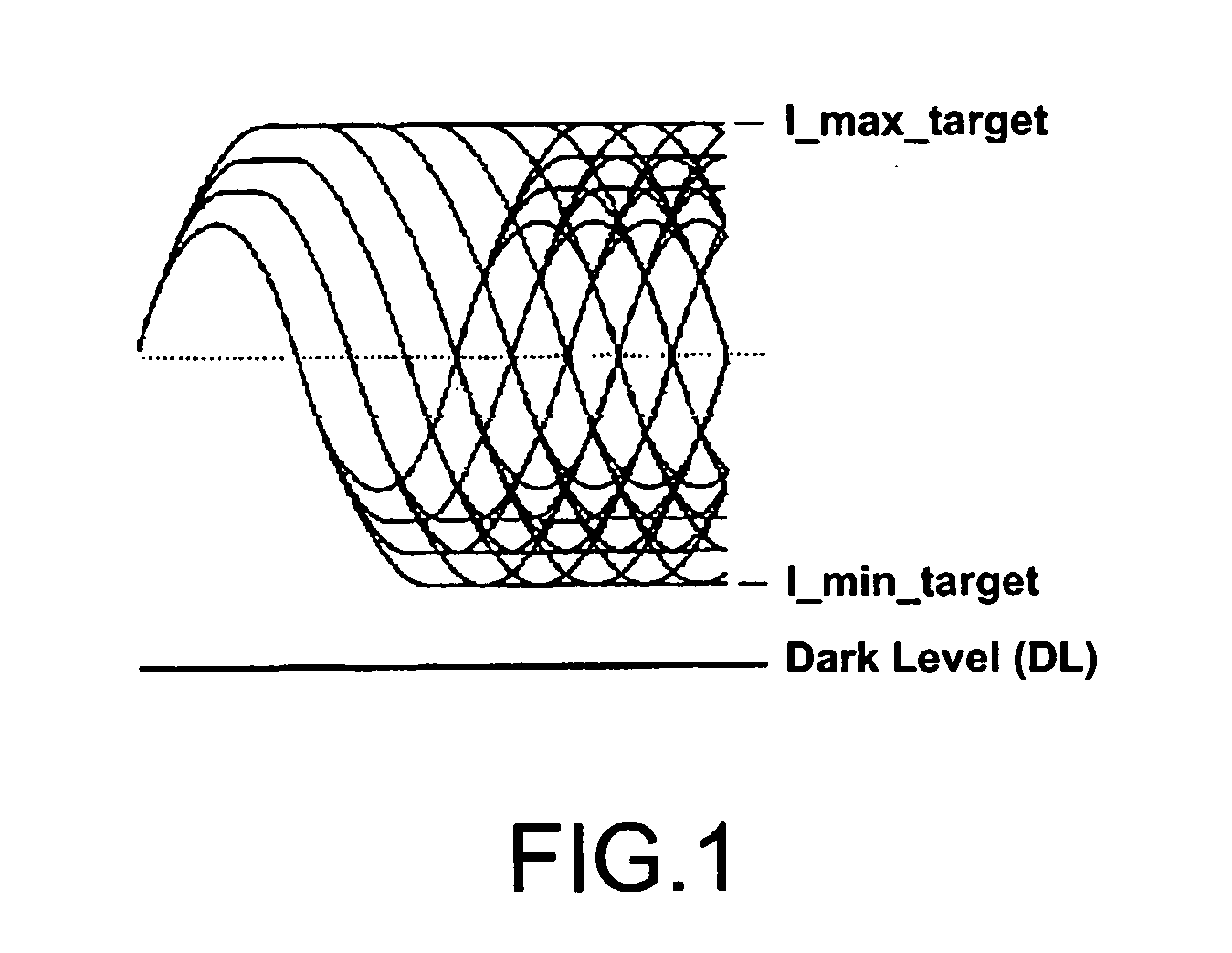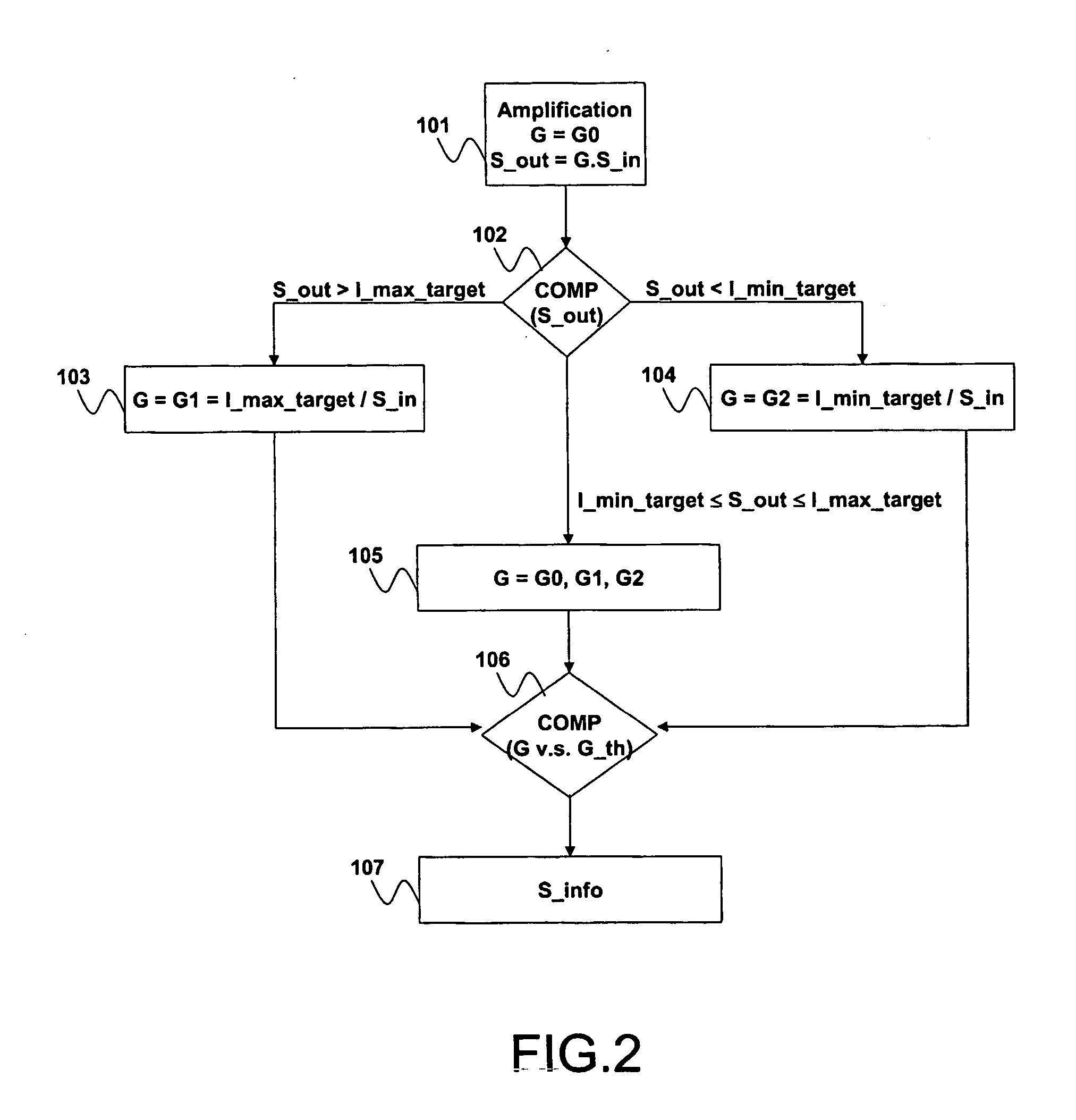Method and system for controlling the level of a data signal read from an optical disc
a data signal and optical disc technology, applied in the field of optical recording, can solve the problems of reducing the performance measured in terms of jitter and error rate, preventing the system from quickly responding to defects, and affecting the reading strategy of optical discs, so as to improve the reading strategy and reduce the reflection
- Summary
- Abstract
- Description
- Claims
- Application Information
AI Technical Summary
Benefits of technology
Problems solved by technology
Method used
Image
Examples
Embodiment Construction
[0024]FIG. 2 is a flowchart of processing steps for controlling the level of an input readout signal S_in read from an optical disc for generating an output readout signal S_out.
[0025] This method comprises a step 101 of amplifying the input readout signal S_in by a gain G for generating the output readout signal S_out. Readout signals are thus linked by the following relation:
S_out=G*S—in Eq.1
The gain G is initially set to an arbitrary value G0, for example G0=1.
[0026] This method comprises a step 102 of comparing said output readout signal S_out with a maximum target level I_max_target and with a minimum target level I_min_target. The target levels are known, for example, from specifications, or chosen by measurement so as to be close to the maximum and minimum levels of the input readout signal S_in in optimal conditions (i.e. without reduction of the laser beam reflected from the optical disc).
[0027] This method comprises a first step 103 of setting said gain G to a value...
PUM
| Property | Measurement | Unit |
|---|---|---|
| gain threshold | aaaaa | aaaaa |
| reflectivity | aaaaa | aaaaa |
| time constants | aaaaa | aaaaa |
Abstract
Description
Claims
Application Information
 Login to View More
Login to View More - R&D
- Intellectual Property
- Life Sciences
- Materials
- Tech Scout
- Unparalleled Data Quality
- Higher Quality Content
- 60% Fewer Hallucinations
Browse by: Latest US Patents, China's latest patents, Technical Efficacy Thesaurus, Application Domain, Technology Topic, Popular Technical Reports.
© 2025 PatSnap. All rights reserved.Legal|Privacy policy|Modern Slavery Act Transparency Statement|Sitemap|About US| Contact US: help@patsnap.com



